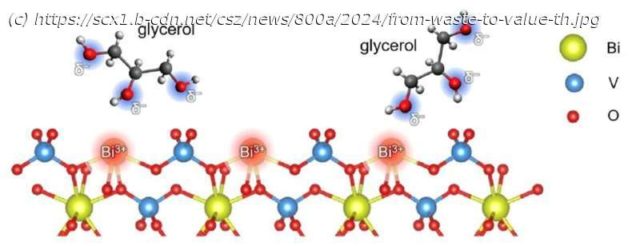In 2023, around 16 billion liters of biodiesel and HVO diesel were produced in the European Union, based on maize, rapeseed, or partially on waste materials from agricultural production. A by-product of biodiesel production is glycerol, which can be used as a building block for the production of valuable chemicals such as dihydroxyacetone, formic acid, glyceraldehyde and glycolaldehyde via a glycerol oxidation reaction (GOR). Glycerol can be oxidized electrochemically in (photo)electrochemical (PEC) reactors, which are currently being developed specifically for the production of green hydrogen.
In 2023, around 16 billion liters of biodiesel and HVO diesel were produced in the European Union, based on maize, rapeseed, or partially on waste materials from agricultural production. A by-product of biodiesel production is glycerol, which can be used as a building block for the production of valuable chemicals such as dihydroxyacetone, formic acid, glyceraldehyde and glycolaldehyde via a glycerol oxidation reaction (GOR). Glycerol can be oxidized electrochemically in (photo)electrochemical (PEC) reactors, which are currently being developed specifically for the production of green hydrogen.
Домой
United States
USA — IT From waste to value: The right electrolytes can enhance glycerol oxidation






